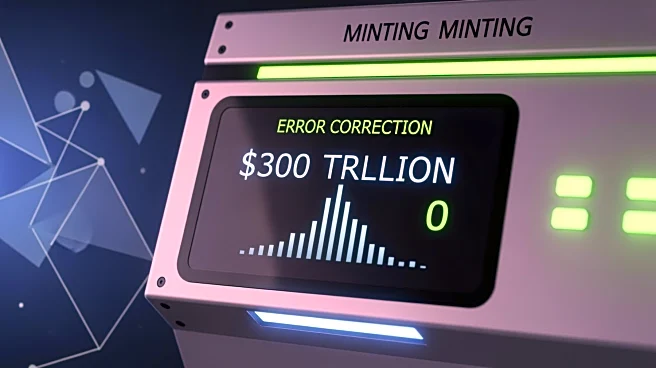What's Happening?
Paxos, a blockchain partner of PayPal, inadvertently minted $300 trillion worth of its stablecoin, PYUSD, due to an internal technical error. This amount is more than double the estimated global GDP of $111
trillion as of 2024. The error was quickly identified and rectified within 20 minutes, with the excess PYUSD being 'burned' to prevent any impact on the market. Paxos assured that there was no security breach and that customer funds remained safe. The incident was detected by market observers using Etherscan, a blockchain analytics platform.
Why It's Important?
This incident highlights the potential risks and vulnerabilities in the management of digital currencies, particularly stablecoins, which are supposed to maintain a stable value by being backed by real-world assets like US dollar deposits and treasuries. The error raises questions about the internal controls and auditing processes of companies like Paxos, which are crucial for maintaining trust in the cryptocurrency market. The event also underscores the need for robust proof-of-reserve mechanisms to ensure that stablecoin issuances are adequately backed by actual reserves, thereby preventing similar occurrences in the future.
What's Next?
Following this incident, there may be increased scrutiny from regulators and stakeholders on the operational practices of stablecoin issuers. Paxos and similar companies might face pressure to enhance transparency and implement stricter internal controls to prevent such errors. Additionally, there could be calls for regulatory frameworks to mandate proof-of-reserve mechanisms, ensuring that stablecoins are consistently backed by tangible assets. This could lead to broader discussions on the regulation of digital currencies and their integration into the traditional financial system.
Beyond the Headlines
The incident with Paxos also reflects the abstract nature of digital currencies and the complexities involved in their management. As cryptocurrencies become more integrated into mainstream financial systems, ensuring their stability and reliability becomes increasingly important. This event may prompt a reevaluation of the technological and operational frameworks that underpin the issuance and management of stablecoins, potentially leading to innovations in blockchain technology and financial oversight.











